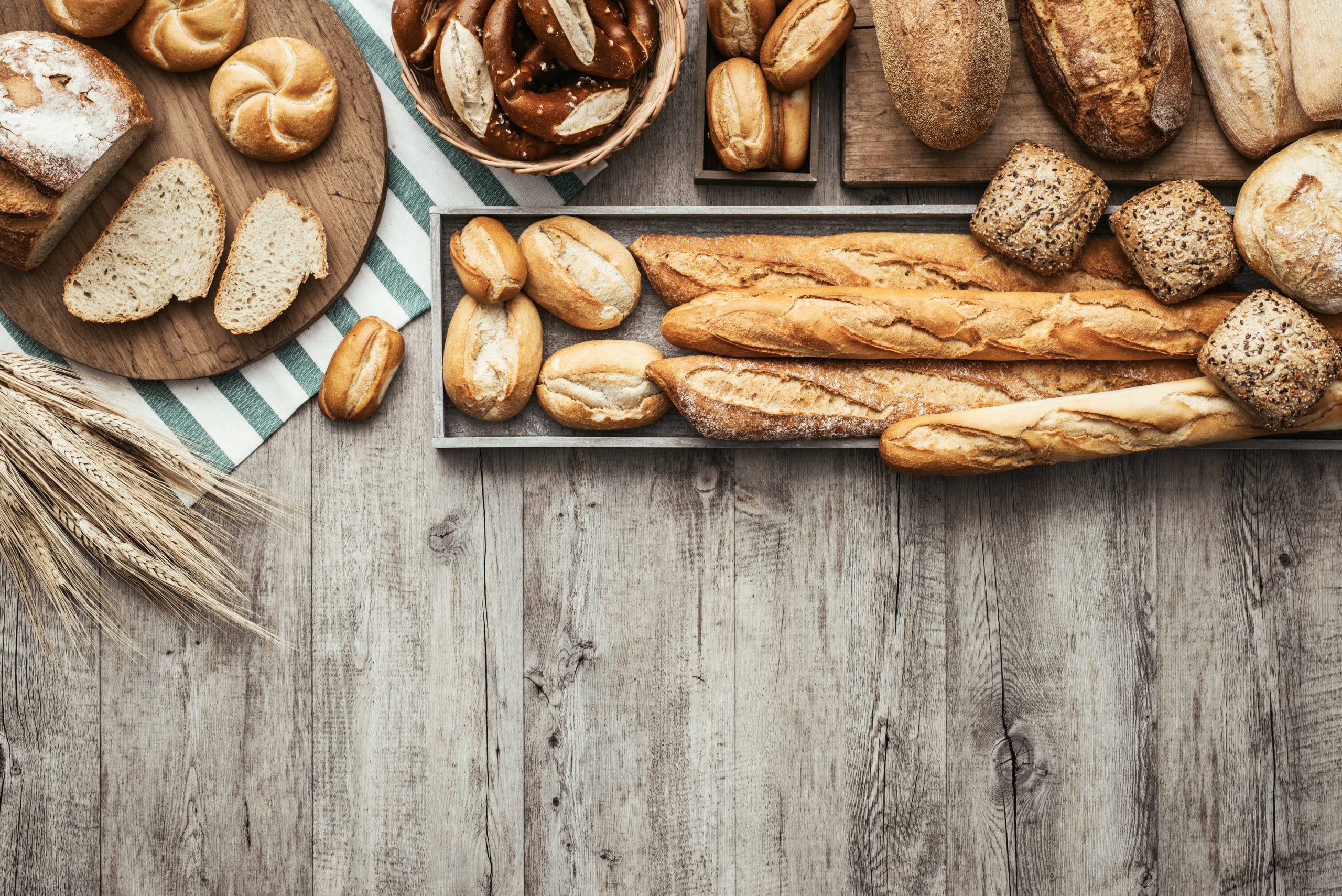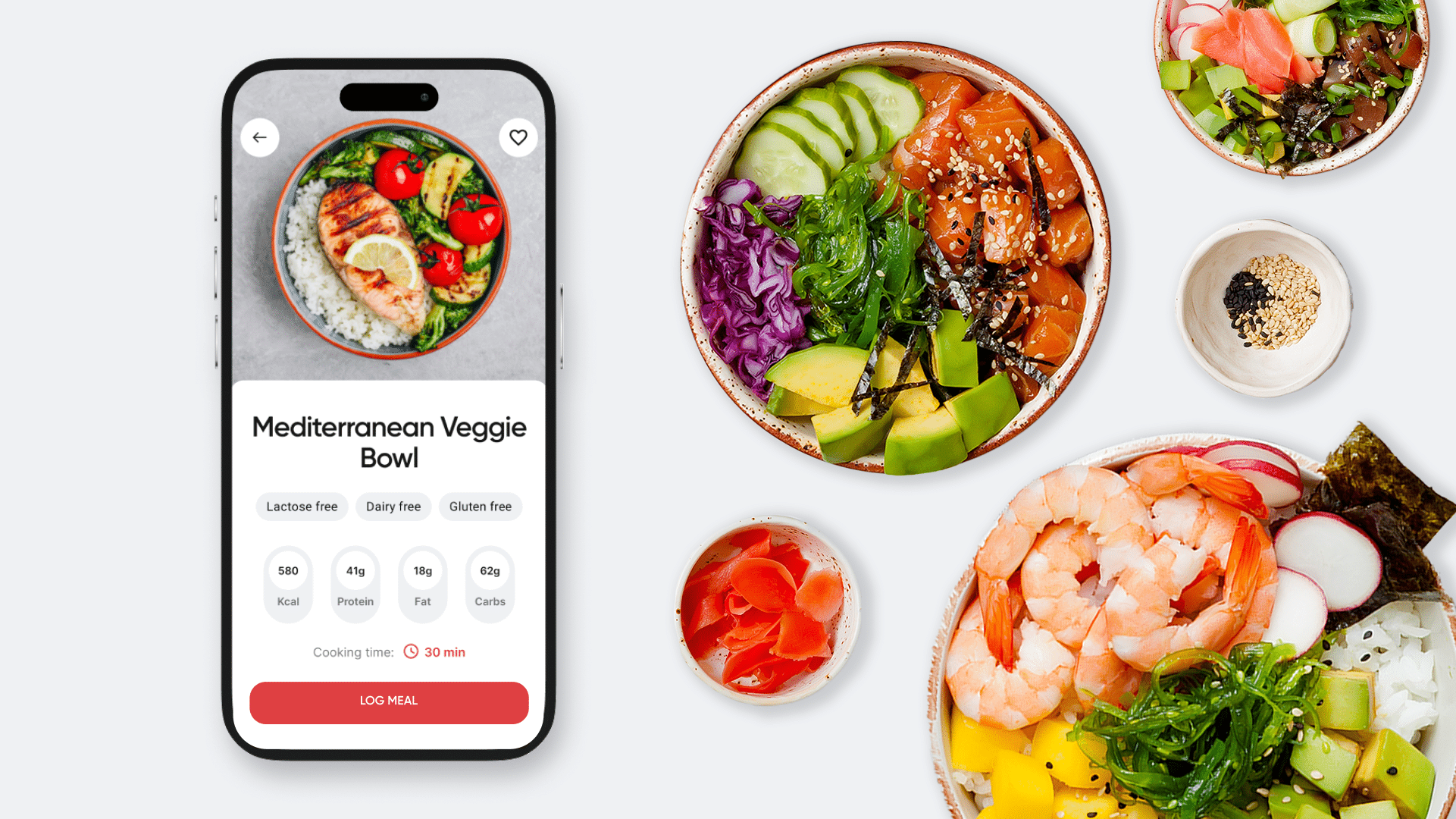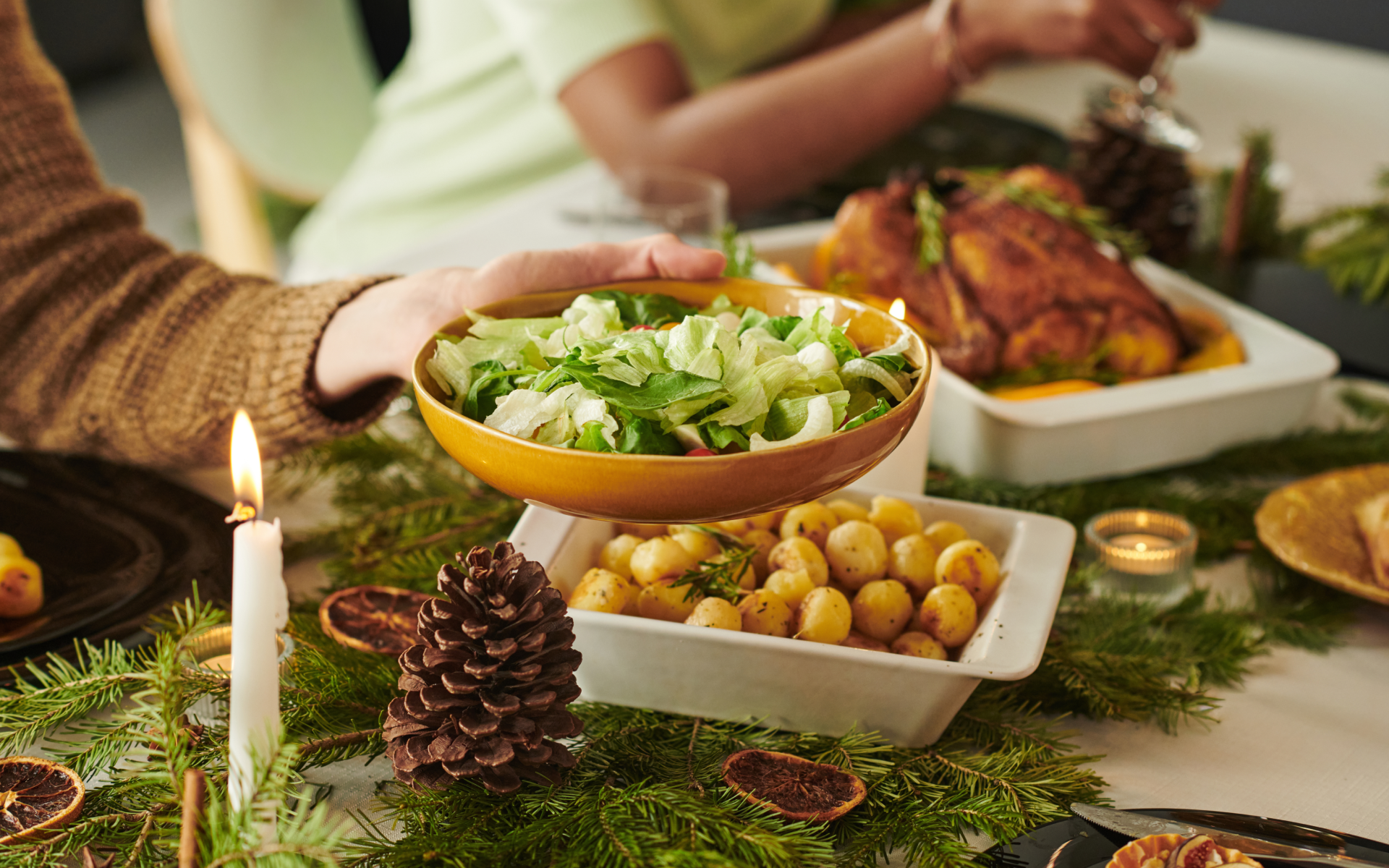Some health-inspired eaters believe that bread is not good for health, therefore they decide to avoid its consumption as much as possible. “It’s only calories, nothing hearty” – an undeserved label these individuals loudly proclaim for each bread.
But is it accurate? Should you avoid bread because it offers no vital nutrients, only extra calories for your body?
In reality, no. Bread can not only complement certain dishes, filling them with flavorful taste but also give your body important nutrients for proper functioning. Fortunately, there are healthy bread recipes for bread makers that are available online. That said, if you don’t have time to seek out hearty breads in grocery stores, you can pull off a delectable treat on your own. Keeping tabs on ingredients is the main step in getting healthy crispy-soft bread. Being in control of all the ingredients allows you to whip up the best hearty bread you won’t find in any grocery store. Plus, the whole process of preparation is another exciting amusement (surely for those who adore cooking).
How to make healthy bread? Catch these 3 homemade recipes to enjoy fresh bread at any time of the day.
What’s the healthiest bread to make?
There are many healthy bread options that anyone can do on their own. It’s no surprise that even beginner cooks can prepare delicious bread. Of course, not every kind of bread is created equal.
For example, most white bread contains refined wheat flour and during processing, the flour loses the most nutritious parts of the wheat grain. While some nutrients are added back, the fiber is not. Whole-grain bread, made from whole grain flour, by contrast, contains the bran, germ, and endosperm parts of the grain, which provides a lot more nutrition than the more refined white bread.
Let’s look at the hearty bread you can make – the whole-grain bread.
Whole-Grain Bread Info
Whole-grain bread is bread made from whole-grain flour. This type of flour is less refined and retains more nutrients. Since whole-grain products do not undergo as much processing, the entire grain remains, which preserves more of its healthy qualities (9).
According to the American Heart Association, whole-grain products provide nutrients, such as:
- magnesium
- selenium
- riboflavin, or vitamin B-2
- thiamin, or vitamin B-1
- niacin, or vitamin B-3
- folate, or vitamin B-9
- iron
- fiber (12).
Fiber is a complex carbohydrate that helps your digestive health. It slows down food digestion, promotes stool softening, and regulates blood glucose levels. There is research suggesting that whole-grain foods could help reduce the risk of type 2 diabetes, heart disease, and certain cancers (2).
Most supermarkets sell various whole-grain bread versions including:
- whole grain bread loaves, buns, and baguettes
- whole-grain tortillas
- whole-wheat pita bread
- whole-wheat bagels
- whole-grain muffins (9).
Still, preparing whole-grain bread by yourself is possible too. You will love this step-by-step healthy whole-grain bread recipe.
If you wish to cinch your waist, tone up your bat wings, blast away the muffin top – our fitness app was created to cater to all your needs! BetterMe won’t give excess weight a chance!
Healthy Whole-Grain Bread
Ingredients:
- 1 1/2 cups warm water
- 1 Tbsp flaxseed meal
- 2 Tbsp maple syrup, or honey if not vegan
- 3/4 Tbsp fast-acting yeast
- 1/2 Tbsp salt
- 2 Tbsp rolled oats
- 2 cups Bob’s Red Mill Whole-Wheat Pastry Flour
- 1 3/4 cups All-Purpose Flour (plus more for rolling)
- 2 Tbsp raw or roasted sunflower seeds
Instructions:
- Combine warm water, yeast, maple syrup, salt, flaxseed meal, and flour in a large mixing bowl and stir. It should result in a sticky, rough dough. Add about 3 3/4 cups of flour until the dough is no longer sticking to the sides.
- Lift the dough out and grease the bowl with nonstick spray. Cover and let the dough rise for 2 hours at room temperature and 2 hours in the fridge.
- Create a small hole in the dough with your fingers and pour in sunflower seeds and oats. Transfer dough to a floured work surface and knead for about 20 turns. Form a loaf-like shape of the dough.
- Place seam-side down in a lightly greased loaf pan and coat with flour slightly over the top to help keep the dough moist. Loosely cover with plastic wrap and let cool for 45-60 minutes.
- Preheat oven to 425 degrees F and place a metal iron pan on the lowest oven rack. Also, have 1 cup of hot water ready.
- Slash the bread 2 or 3 times with a knife, cutting ½-inch deep.
- Place in oven on middle rack and carefully pour hot water into the shallow pan on the rack beneath until the water bubbles and steams.
- Bake the bread for 25 to 37 minutes, or until it becomes golden-coloured and rises.
- Remove the bread from the oven and let it stay for 5 minutes. Then carefully transfer the bread to a cooling rack to cool. Let it cool completely before slicing.
- Store leftovers in a plastic bag at room temperature for a couple of days or transfer them to a freezer for longer-term storage.
Nutritional facts for one slice (of 12)
| Calories | Carbs | Protein | Fiber |
|---|---|---|---|
| 169 | 32.4 grams | 6.1 grams | 4.2 grams (7). |
Read more: A Flatbread Recipe for Every Occasion
Can homemade bread be healthy?
Yes, homemade bread can be similarly healthy or even a healthier option, compared to store-bought breads. The key point is that you select all the ingredients that go into your homemade bread. You can make healthy bread with yeast or search for yeast-free recipes.
Other benefits of whipping up your own bread involve:
- Using the right flours. You can use whole wheat flour, other whole grain flours, or even gluten-free flours if you need to.
- Controlling the sugar content. You also control the sugar content without worrying about the presence of high fructose corn syrup, dextrose, or any other added sugars..
- Fewer unhealthy fats or their complete absence. Homemade bread does not include any fats unless you add it yourself. You can include heart-healthy unsaturated fats such as safflower or olive oil in your recipes, or use a recipe without any added fat at all.
Breads you buy at the grocery may contain preservatives and other additives for better flavor, texture, and extended shelf life flavor, while homemade breads don’t.
Which bread is good for health?
The aforementioned whole-grain bread is the first one in our list of hearty breads. Yet, a list can be extended to dozens of options but without overwhelming you with the choice, let’s narrow down this list to two more healthy options.
They include:
- Rye bread
- Ezekiel bread
Rye bread
People make rye bread with flour of rye grains which is similar to wheat. Concerning the nutritional value, rye bread has a similar nutritional profile to whole-grain wheat-based bread. It boasts an array of vitamins and minerals.
If you’re choosing the bread in the store or decided to make it on your own, it is best to focus on whole-grain rye bread. The nutrition values of one slice, or 36 g, of rye bread may contain the following nutrients:
- 90 calories
- 17 g of carbohydrate
- 3 g of protein
- 2.02 g of fiber
- 1.5 g of fat (8).
Rye bread also contains such nutrients as calcium and iron. Additionally, it offers some other health benefits, similarly to other whole grains.
Ezekiel bread
Ezekiel bread differs from other types of bread as manufacturers use sprouted whole grains. These breads have the same benefits as whole-grain bread and may also provide extra nutrients.
Here’s how it works: manufacturers soak the whole grains so they begin to germinate. This process is thought to unlock extra nutrients in the grain.
Basically, Ezekiel bread contains several different types of legumes and grains that provide a range of additional nutrients, such as lentils, barley, and spelt.
One slice, or 45 grams (g), of Ezekiel bread, may contain the further nutrients :
- 140 calories
- 22 g of carbohydrate
- 3.5 g of fat
- 5 g of protein
- 4 g of fiber (8).
Ezekiel bread may also contain the following nutrients:
- niacin
- iron
- riboflavin
- calcium
There are also different, Gluten Free Bread Recipes for people who are sensitive to gluten. If you’re following a healthy diet for weight loss goals, you can look at the, No-Sugar Bread Recipes – the guilty pleasure you won’t regret trying.
Can bread be part of a healthy diet?
Bread has been getting a bad reputation for years but it shouldn’t be framed for weight gain all the time. Bread can absolutely be a part of a healthy balanced diet, although certain choices may be better than others.
Referring to white bread, crackers, pretzels, and other refined grain products, these are more likely to contribute to weight gain, as they don’t contain the fiber which keeps you full for longer. One study found that eating more whole grains including whole-wheat bread was associated with having less belly fat, compared to eating more refined-grain foods (10).
Whole grains include more fiber, which promotes weight loss by slowing down digestion and making you feel full for longer after eating. This can help you eat less overall. .Your healthy balanced diet is a major part of your weight-management strategies. Including physical activity and getting good sleep can help you attain the desirable goals.
If you’re an avid bread eater who can’t live without a delectable sandwich in the morning or a toasty snack between meals, then these two practical recipes will fit your needs to the fullest.
BetterMe is your fast-track ticket to a long-lasting weight loss! Tailor your fitness journey and maximize your results with just a couple of swipes!
Recipe#1 The Best Healthy Soft Seedy Sandwich Bread
Healthy sandwich bread recipes are an absolute addition to your breakfast routine – the essential beginning of your day.
Ingredients:
For the bread:
- 2 1/4 teaspoons quick-rise yeast
- 1/3 cup old-fashioned rolled oats
- 1 tablespoon honey
- 1 ¼ cup milk
- 3 tablespoons melted butter
- 2 cups bread flour
- 2 tablespoons flaxseed meal
- 3/4 cup whole wheat flour
- 1 tablespoon poppy seeds
- 1 teaspoon salt
- 2 tablespoons sunflower seeds
- 1 tablespoon sesame seeds
- Oil, for coating
For the egg wash:
- 1 beaten egg
For topping:
- 2 tablespoons old-fashioned rolled oats
- 1 tablespoon sunflower seeds
Optional: extra poppy seeds and sesame seeds
Instructions:
- In a small saucepan, heat milk over low heat until milk is warm. Remove from heat, pour into a large bowl and stir in yeast, oats, and honey. Let the mixture sit for 5 minutes.
- Then, stir in melted butter into the bowl with oats. Promptly add in bread flour, whole wheat flour, salt, and flaxseed meal – mix with a wooden spoon.
- Add in sesame seeds, sunflower seeds, and poppy seeds and gently mix into the dough. Place dough onto a well-floured surface and knead the dough for 10 minutes with your hands.
- Form a ball with the dough and place it in a large bowl coated with about 1 tablespoon of oil. Cover the dough with plastic wrap and a warm towel. Allow it to rise for about 90 minutes.
- Next, grease an 8×4-inch loaf pan. After the dough has risen, knead it just a few more times on a clean flour-coated surface for about 1 minute then shape the dough into an 8-inch long log and place it in the prepared pan.
- Cover the loaf with a warm towel and plastic wrap allowing it to rise again for 60-90 minutes. This may take more or less time depending on the temperature in your house.
- Once the dough has risen again, preheat oven to 350 degrees F. Beat the egg in a small bowl and brush over the top of the dough. Sprinkle sunflower seeds, a few more oats, sesame seeds, and poppy seeds on top of the dough.
- Bake for 35-40 minutes.
- Transfer a pan to a wire rack to cool for 10 minutes. Remove the bread from the pan and place it on a wire rack to let it cool for an additional two hours.
- Do not cut the bread before it is completely cooled if you don’t want to mess with the texture.
- Bread should be stored at room temperature. If it’s humid/hot, store bread in the fridge.
Nutritional facts for one slice (of 15)
| Calories | Carbs | Protein | Fiber |
|---|---|---|---|
| 149 | 22.4 grams | 5.1 grams | 2 grams (1). |
Read more: Gluten Free Bread Recipe: Light, Fluffy & Delicious Breads
Honey Oat Quick Bread
Can I make healthy bread without yeast? Just check out the practical recipe for quick bread, also known as a lazy one, since you won’t be spending lots of time on mixing and cleanup.
Ingredients:
- 2 tablespoons plus 1 cup of old-fashioned rolled oats
- 1 1/3 cups whole-wheat flour
- ¼ teaspoon baking soda
- 2 ¼ teaspoons baking powder
- 1 cup all-purpose flour
- 1 large egg
- 1 ¼ teaspoons salt
- 8 ounces (scant 1 cup) nonfat or low-fat plain yogurt
- ¾ cup nonfat or low-fat milk
- ¼ cup canola oil
- 1/4 cup clover honey
Instructions:
- Put the rack in the middle of the oven and preheat to 375 degrees F.
- Generously coat a 9-by-5-inch loaf pan with cooking spray and sprinkle 1 tablespoon of oats in the pan. Move the pan back and forth to coat it with oats.
- Stir together whole-wheat flour, baking soda, all-purpose flour, baking powder, and salt in a large bowl.
- Beat the remaining 1 cup of oats, yogurt, egg, oil, and honey with a fork in a medium bowl. Stir in milk.
- Gently stir the yogurt mixture into the flour. Promptly scrape the batter into the pan and spread it evenly to the edges. Sprinkle the remaining 1 tablespoon of oats over the top.
- Bake the loaf until well browned on top for 40 to 50 minutes (a toothpick inserted in the center should come out clean).
- Let stand in the pan on a wire rack for 15 minutes and turn it out onto the rack. Let cool until barely warm, about 45 minutes.
- Enjoy.
Nutritional facts for one slice (¾ inch)
| Calories | Carbs | Protein | Fiber |
|---|---|---|---|
| 200 | 31 grams | 6 grams | 3 grams (3). |
FAQs
Is homemade bread better for you than regular bread?
Homemade bread may be a better option for you, as you will be selecting all the hearty ingredients and adding them to your recipe. Nonetheless, you can buy good bread in grocery stores by checking the ingredients on the label.
Is bread made in a bread maker healthy?
Yes, bread made in a bread maker can be healthy, especially if you’ve added the hearty whole-grain ingredients into the dough. Whipping up bread on your own allows you to experiment with versatile flours and flavors, along with preparing sugar-free and gluten-free options.
Is homemade bread considered a processed food?
Yes, homemade bread is considered a processed food, but not an ultra-processed food. Yet, homemade bread that contains healthy ingredients might give you benefits in the form of minerals and vitamins, plus fiber if you’re using whole-grain flour.
Is homemade bread healthier than rice?
Both bread (homemade or store-bought) and rice have their place in a healthy balanced diet. While both are rich sources of carbohydrates, they vary slightly in their micronutrient profiles, and they are each used in different applications and complement different dishes.
The Bottom Line
How to make healthy bread? Catch these 3 homemade recipes that were included in this short review.
Bread may be a healthy addition to your meals especially if you decide to prepare it yourself. Since you’ll be in full control of ingredients, you can whip up highly nutritious products that pack your body with protein, complex carbs, and fiber.
Three popular types of hearty breads may benefit your health: whole-grain, Rye bread, and Ezekiel bread. Bread can be part of a healthy diet, especially whole-grain bread since whole grains in general are good for your digestion and glucose regulation.
Enjoy the three recipes of healthy bread and treat yourself to it’s well-crusty and fluffy texture.
DISCLAIMER:
This article is intended for general informational purposes only and does not serve to address individual circumstances. It is not a substitute for professional advice or help and should not be relied on for making any kind of decision-making. Any action taken as a direct or indirect result of the information in this article is entirely at your own risk and is your sole responsibility.
BetterMe, its content staff, and its medical advisors accept no responsibility for inaccuracies, errors, misstatements, inconsistencies, or omissions and specifically disclaim any liability, loss or risk, personal, professional or otherwise, which may be incurred as a consequence, directly or indirectly, of the use and/or application of any content.
You should always seek the advice of your physician or other qualified health provider with any questions you may have regarding a medical condition or your specific situation. Never disregard professional medical advice or delay seeking it because of BetterMe content. If you suspect or think you may have a medical emergency, call your doctor.
SOURCES:
- Best Healthy Soft Seedy Sandwich Bread (2023, ambitiouskitchen.com)
- Health Benefits of Dietary Whole Grains: An Umbrella Review of Meta-analyses (2017, ncbi.nlm.nih.gov)
- Honey Oat Quick Bread (2024, eatingwell.com)
- Postprandial differences in the plasma metabolome of healthy Finnish subjects after intake of a sourdough fermented endosperm rye bread versus white wheat bread (2011, biomedcentral.com)
- Relationship of glucose regulation to changes in weight: a systematic review and guide to future research (2010, ncbi.nlm.nih.gov)
- The American Journal Of Clinical Nutrition (2024, nutrition.org)
- The Easiest Whole Grain Seeded Bread (minimalistbaker.com)
- U.S. DEPARTMENT OF AGRICULTURE (2019, nal.usda.gov)
- What are the most healthful types of bread? (2019, medicalnewstoday.com)
- Whole- and refined-grain intakes are differentially associated with abdominal visceral and subcutaneous adiposity in healthy adults: the Framingham Heart Study (2010, ncbi.nlm.nih.gov)
- Whole Grain Intake and Glycaemic Control in Healthy Subjects: A Systematic Review and Meta-Analysis of Randomized Controlled Trials (2017, ncbi.nlm.nih.gov)
- Whole Grains, Refined Grains, and Dietary Fiber (heart.org)









